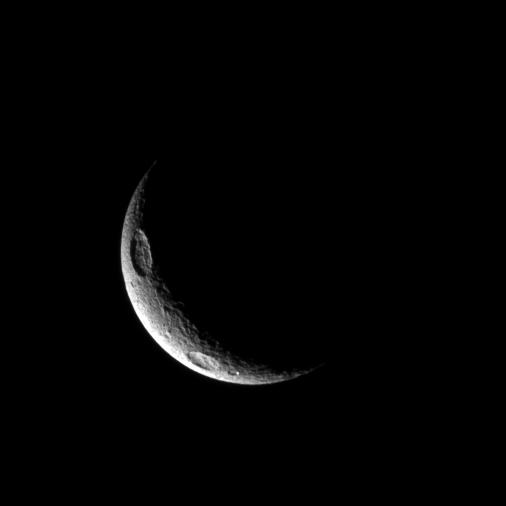Greek Drama

| PIA Number | PIA12581 |
|---|---|
| Language |
|
A crescent of Tethys displays two of the moon's large craters.
Penelope Crater can be seen at the top left. Antinous Crater is in the bottom left, in the far southern latitudes. Features on Tethys are named after characters and places from Homer's Greek epics. See Penelope Crater to learn more.
This view looks toward the south pole of Tethys. The pole lies on the dark side of the terminator to the lower right of the crescent of light. Lit terrain seen here is on trailing hemisphere of Tethys (1,062 kilometers, or 660 miles across).
The image was taken in visible light with the Cassini spacecraft narrow-angle camera on Jan. 9, 2010. The view was acquired at a distance of approximately 663,000 kilometers (412,000 miles) from Tethys and at a Sun-Tethys-spacecraft, or phase, angle of 135 degrees. Image scale is 4 kilometers (2 miles) per pixel.
The Cassini-Huygens mission is a cooperative project of NASA, the European Space Agency and the Italian Space Agency. The Jet Propulsion Laboratory, a division of the California Institute of Technology in Pasadena, manages the mission for NASA's Science Mission Directorate, Washington, D.C. The Cassini orbiter and its two onboard cameras were designed, developed and assembled at JPL. The imaging operations center is based at the Space Science Institute in Boulder, Colo.
For more information about the Cassini-Huygens mission visit http://saturn.jpl.nasa.gov . The Cassini imaging team homepage is at http://ciclops.org .
Credit: NASA/JPL/Space Science Institute
